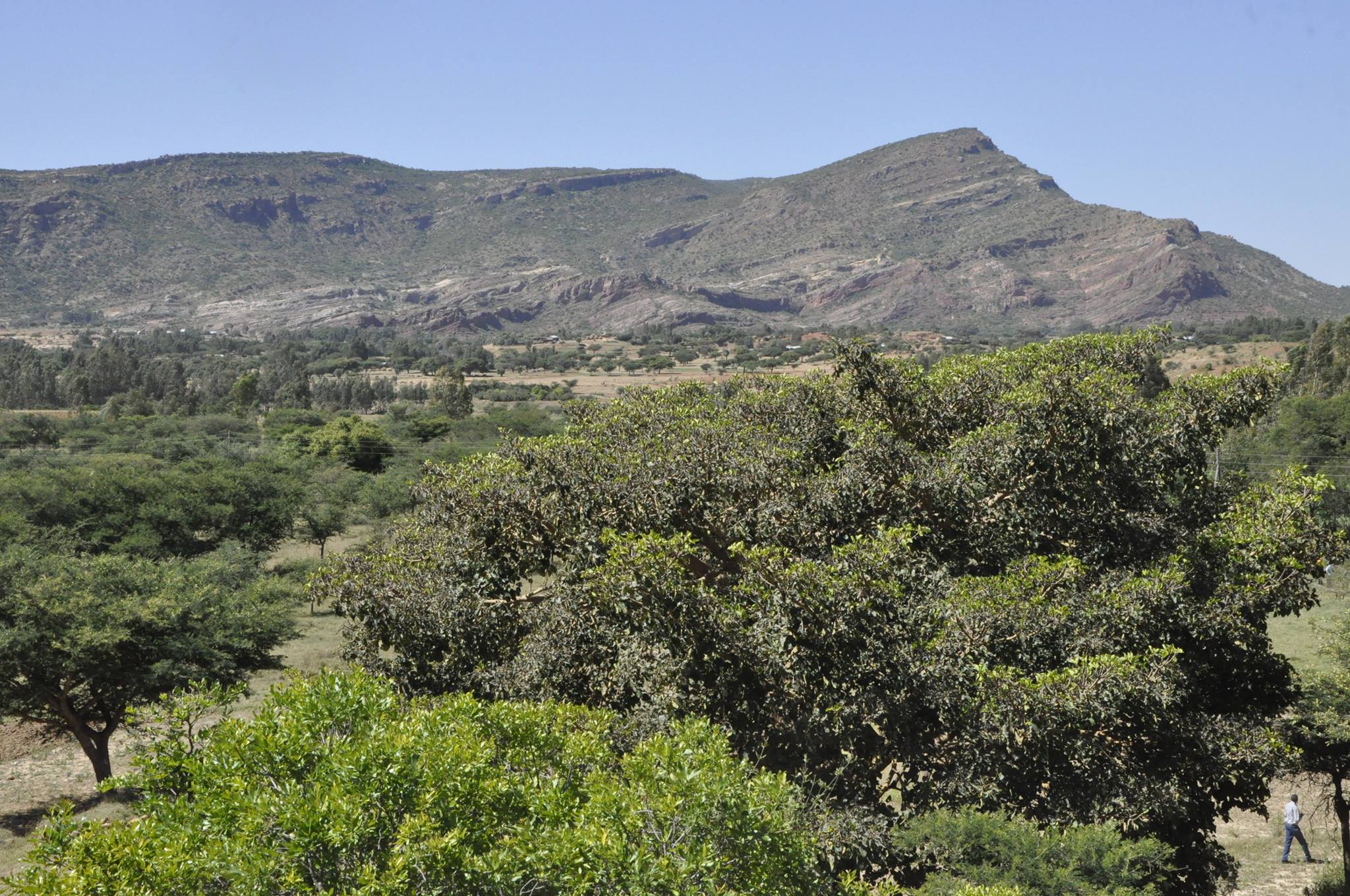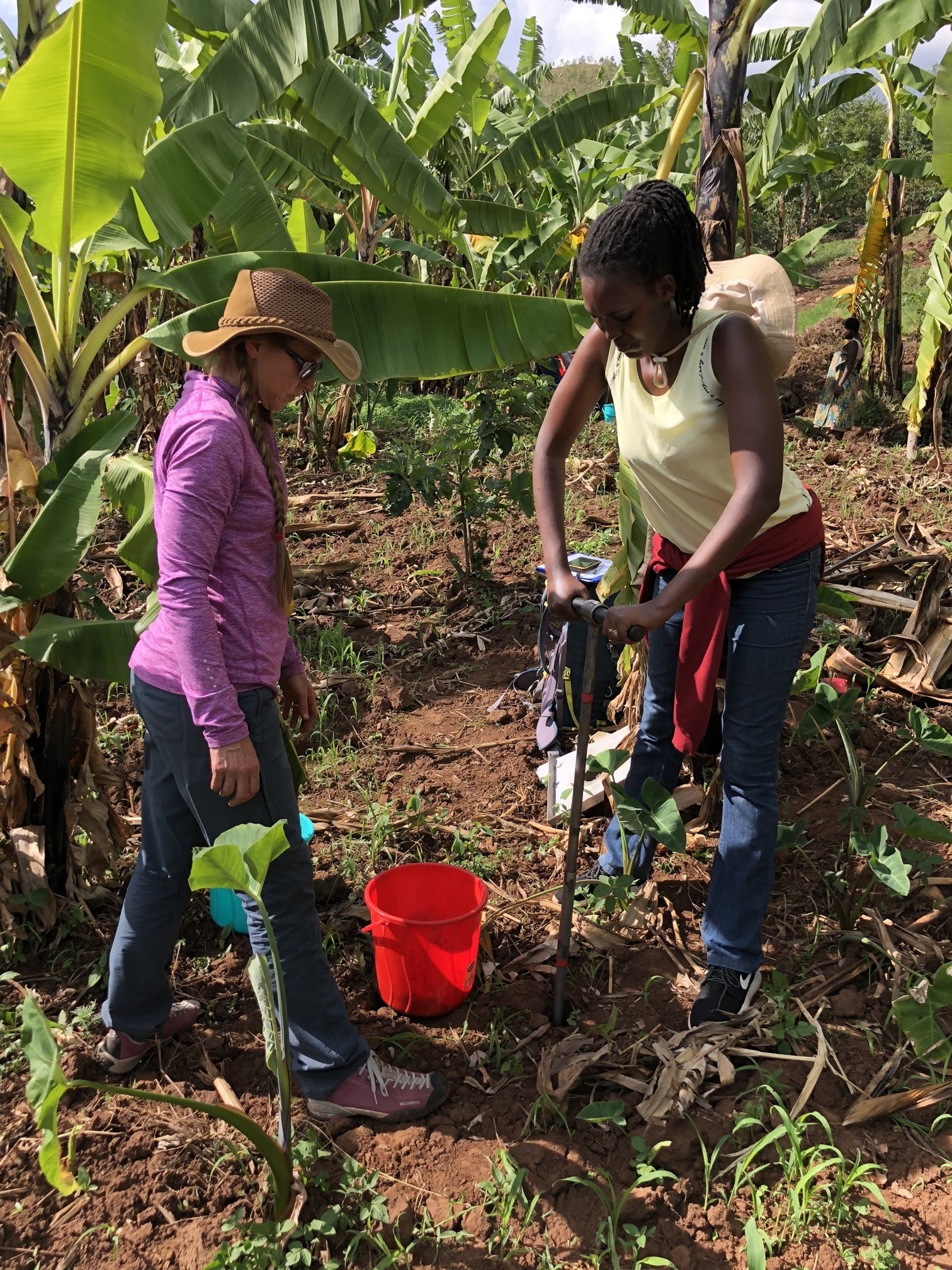BY · FEBRUARY 4, 2019

Tigray region, Ethiopia. One of the sites of the Regreening Africa project. Photo: World Agroforestry/Gilberte Koffi
The Regreening Africa project is charting new paths into coplex, unmapped territory in its effort to restore 1 million hectares of land in eight countries within five years.
The goal of the Reversing Land Degradation in Africa by Scaling up Evergreen Agriculture (Regreening Africa) project is ambitious: a massive expansion of the scaleof land-restoration activities across eight countries — Ethiopia, Ghana, Kenya, Mali, Niger, Rwanda, Senegal and Somalia — covering 1 million hectares and 500,000 households, within five years.
‘We have set ourselves very ambitious targets, but that’s the beauty of this project,’ said Bernard Crabbe, head of rural development at the European Commission, which funds Regreening Africa. ‘Agroforestry, and land restoration in general, are at the convergence of many global agendas, such as food security, eco-system preservation, job creation and rural resilience: key priorities of the European Union.’
Crabbe was speaking at the second steering committee meeting of Regreening Africa, held in Addis Ababa, Ethiopia, 20–23 November 2018. Participants came from the Government of Ethiopia and partner organizations: World Agroforestry (ICRAF), Economics of Land Degradation, Catholic Relief Services(CRS), World Vision International, Oxfam, CAREand Sahel Eco.

Regreening Africa Steering Committee Meeting, November 2018, Addis Ababa, Ethiopia. Photo: Gilberte Koffi
By bringing together research and development institutions, working with national and local governments, local community-based organisations and individual farmers, Regreening Africa presents a unique opportunity for doing development differently and accelerating land restoration in some of the most adversely affected regions on the continent. Yet the short time-frame and wide range of partners and countries presents its own unique set of advantages and disadvantages.
‘I understand the challenges you are facing,’ said Ravi Prabhu, Regreening Africa’s principal investigator and deputy director-general of World Agroforestry. ‘This is an ambitious project that is stretching the way we use research for discovery and delivery. I appreciate the advantages but also the challenges of running such a big consortium of partners from different geographies and disciplines. But I am also confident that we shall achieve our goals and targets as long as we keep moving in the right direction.’
What Regreening Africa represented was a paradigm shift in thinking and action, claimed Susan Chomba, the project leader.
‘The paradigm shift is to combine research with development to make evidenced-based decisions for the varied socio-economic and biophysical landscapes of eight countries,’ she said. ‘Every year presents an opportunity for the scientific and implementation teams to come together and identify what works and what doesn’t work in different ecological, social and economic contexts; and to identify and scale up strategies that do work, which will make the project successful.’
Olaf Westermann of CRS concurred that the nature of the project’s structure forced a paradigm shift.
‘The idea of different international NGOs, who otherwise would be competitors, working together to deliver a common goal is, in itself, a great paradigm shift,’ he said.
Reflecting not only on Regreening Africa’s complexity but also beyond, Walter Engelberg from Deutsche Gesellschaft für Internationale Zusammenarbeit (GIZ) made a call for a broader approach to land restoration.
‘There is need for vigilance as far as leveraging project activities with other continental developments, such as AFR100 and the Great Green Wall Initiative,’ he said. ‘We need to keep an eye on the ball of productivity of agriculture but also other livelihood benefits. We need to think of money beyond the trees because there is a danger of putting too much emphasis on planting trees that we miss other factors that encourage landscape restoration, including the provision of ecosystem services.’
Some of the highlights of success from the first year include baseline studies successfully conducted in seven out of the eight countries; priority key value chains that will deliver economic benefits for farmers identified through participatory research in six of the countries; deployment of the innovative Stakeholder Approach to Risk Informed and Evidence Based Decision Making process in four countries; application of the Land Degradation Surveillance Framework in Rwanda to combine soil-health assessment with other impact assessments; the development of the Regreening Africa App that will support monitoring activities; initiation of intensive regreening activities through farmer-managed natural regeneration, tree nurseries and other work; along with establishment of project governance structures.
Regreening Africa is an ambitious five-year project that seeks to reverse land degradation among 500,000 households and across 1 million hectares in Sub-Saharan Africa. By incorporating trees into croplands, communal lands and pastoral areas, regreening efforts make it possible to reclaim Africa’s degraded landscapes.
This story was produced with the financial support of the European Union. Its contents are the sole responsibility of Regreening Africa and do not necessarily reflect the views of the European Union.


 Land Degradation Surveillance Framework Training in Rwanda. Photo: Tor-Gunnar Vagen
Land Degradation Surveillance Framework Training in Rwanda. Photo: Tor-Gunnar Vagen